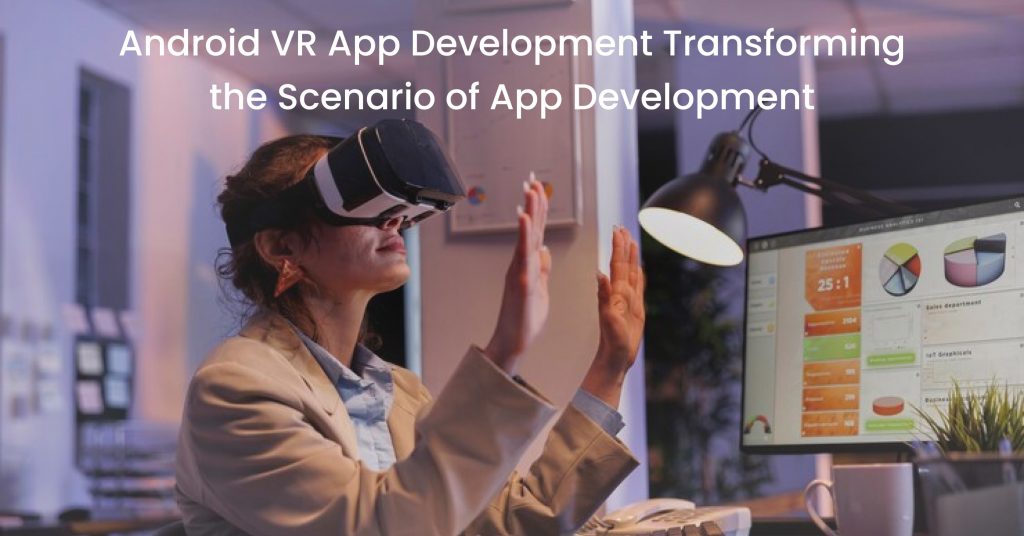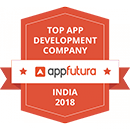
Augmented Reality and Virtual Reality are the two latest trends in app development that define our world. The concept of Virtual reality has shaped our world innovatively. With the advent of smartphones, particularly Android devices, everything has changed. With the Android devices, virtual reality apps have immersed into new experiences. In the present time, the fad of Android VR App Development has increased so much.
Virtual reality apps have dominated the modern world with innovative technology. These apps have imbibed a fresh technical perspective in the modern world. So, in this post, we will take a look at Android VR App Development, its different stages of development, and perks. Stay tuned till the end of the post.
Why Should We Indulge in Android VR Application Development?
The key concern is why we should care for VR app development. In other words, why is Android VR App Development booming in the craze? Let’s take into account some key factors related to it.
Consistent Performance
Android Apps require smooth performance and great user experience. Keeping pace with these two points, virtual reality apps have exceeded everyone’s expectations. Keeping the ease in mind that virtual reality apps provide to clients, they are a dominant force.
1. Monitoring and Tracking Purposes
The Android VR apps are quite great for monitoring and tracking purposes. Many industries need a quick monitoring and tracking system. The development of Android VR applications provides an edge to these industries. Supervisors can easily monitor anything because of these virtual reality apps.
2. Enhances Productivity
Productivity is a crucial aspect of every business. With the development of the Android VR app, there has been a massive increase in productivity. Virtual apps help to boost your overall productivity in the long run. These apps provide us with continuous learning and engaging workplace experiences.
3. Enhanced User-Engagement
Diverse users indeed have a short attention span nowadays. With the help of Android VR app development, productivity has seen a massive increase. VR mobile apps development help to boost productivity as these apps transform your workplace productivity. These apps provide users with engaging workplace experiences.
4. Increase in User-Engagement
Many users often wonder why there has been an increase in user engagement over the years. The entire credit is attributed to the prevalence of these virtual-reality applications. With iOS App Development and Android App Development, user engagement has come to the next level.
5. Mobility
With an increase in Android VR app development, people love to enjoy anytime-anywhere experience. Therefore, over the years, we have seen a massive rise in such a type of app development.
These are some of the best reasons for calling for virtual reality apps. The users also feel great to use such apps as they provide a holistic experience to them.
How do you develop a virtual reality application in Android?
Step 1: Define major goals
The first step in creating a virtual reality application is to decide what your app’s main goals are. It is important to set clear goals for the app. Only when you know exactly what you are building will you be able to answer questions such as how to create a VR application? You will only be able to create an app that gives you a specific experience if there are clear parameters.
You, as the app publisher, must consider what users expect and want from your app. Consider the features that create an immersive and compelling experience. You should also consider making your content available on the internet and popularising it among VR enthusiasts via various social media channels.
Step 2: Define compatibility
Many tech giants still need help to meet the potential of VR applications on smartphone devices. Some VR applications perform well on Android devices. Therefore, we often want to go for the best Android VR App Development process.
Step 3: Choose a platform
Selecting a suitable platform and software development kit is the first step in creating a Virtual Reality application. App development is only completed by selecting the deployment platform. The choice of platforms has a direct impact on app adoption, which directly affects revenue.
When selecting a platform, you should ask yourself the following questions: For which device will you be creating a virtual reality application? Will you be creating a VR application for mobile? Android, iOS, or both? Do you want to create a VR application within a VR provider like Oculus, or will it stand alone?
Consider the platform that will launch your app. Mobile VR headsets like the Samsung Gear, new standalone options that are affordable (Oculus Go), and others are some of the most widely used platforms. If you want to reach the high-end gaming audience, then Oculus Rift or HTC Vive are good places to start. Prioritise platforms where you find your largest audience.
Step 4: Game engines
These engines store data that users will see in their virtual world. They render images and offer input methods for the user.
Most game engines today are available for free. Some game engines can be used with certain software development kits. These game engines can be customised using multiple APIs.
Step 5: Frameworks & libraries
Next, you will need to choose the frameworks and libraries that are right for your project. WebVR is JavaScript, which runs on the web in the browser and provides an API. The VR applications use this API to make it possible for users of most browsers today to experience VR.
The dynamic of the object changes depending on whether you are using hardware that handles time or events. These libraries provide a real-time channel of communication between the application code and hardware in order to render graphics.
Step 6: Designing and prototyping tools
Next, you will want to make sure that your VR app looks good. The development team must consider prototyping VR experiences for testing and validation when designing the VR app.
You can use prototyping to test 360-degree views that give a sense of scale and the position of users. The developers must have a good understanding of how to create prototypes using different software, such as Google Blocks, Photoshop and others.
Step 7: Hardware
It is crucial to know what hardware you need in order to run a VR application. Choose a headset that uses less power and offers a greater range of movement. Rift’s and Vive’s sensor systems have minimum hardware requirements. There are also a variety of VR devices, some of which are listed below.
Console
- Light mobile VR headsets
- Premium mobile VR headsets
- VR headsets connected to external PCs
- Stand-alone headsets
- VR haptic feedback suits
Conclusion:
So, till now, you have seen the wonders of Android VR App Development. Therefore, we are sure that you require the best partner to develop these types of apps. Our earnest advice is to go with Maxtra Technologies Private Limited as they are the one-stop organisation that can provide you with everything as per their requirements.









